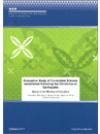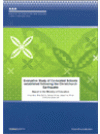As a result of the February 2011 earthquake and subsequent aftershocks, a number of schools in the central city and the eastern suburbs had sustained significant damage or were located in the ‘red zone’1 and unable to reopen on their existing site until either extensive repairs and rebuilding had been undertaken or decisions had been made about the viability of the land with respect to future redevelopment. In order to get students back into learning as quickly as possible, it was decided to co-locate the affected schools on other schools’ sites for periods expected to vary from a month or so to the rest of the 2011 academic year, and potentially beyond that.
The nine relocating schools (two primary, one intermediate and six secondary) thus became ‘guest’ schools, sharing a school site and facilities with one or more ‘host’ schools (one special, one primary, two intermediate and five secondary) that had been less affected by the earthquakes.
The key purposes of the study are to identify and describe the various co-location arrangements made by the schools concerned, and to identity the impacts to date (August 2011) of co-location on students, families, teachers and schools. Note that some schools will remain co-located into the 2012 school year.
Purpose
The key purposes of this study were to describe the co-location arrangements made by the schools in Christchurch following the earthquake and to identify the impact to date (August 2011) of co-location on students families teachers and schools.
Key Results
The key findings of the study are that:
- given the good will and commitment of the parties involved, co-location is a workable solution in disaster situations like that generated by the Christchurch earthquakes, but it was not seen by respondents as educationally ideal or sustainable in the longer term.
- co-location was more problematic among the shift-sharing schools than the site-sharing schools, in particular for the afternoon/guest shift-sharing schools.
- many of the schools involved took the opportunities afforded by co-location to review many of the ‘taken-for-granted’ aspects of school processes, to reflect on their distinctive cultures and values, and to reconsider their particular relationships with their respective communities.


